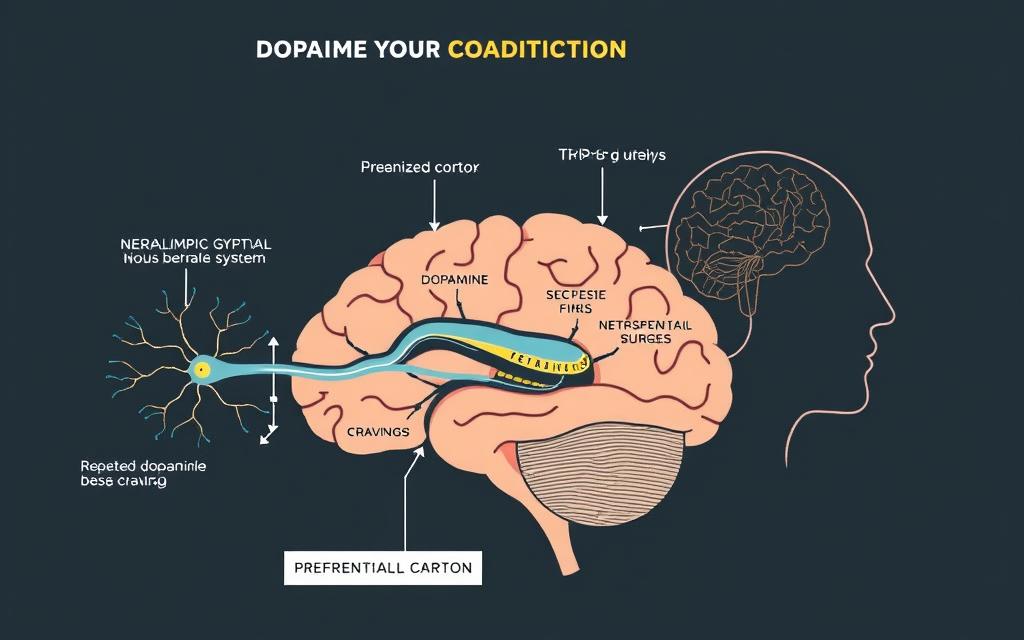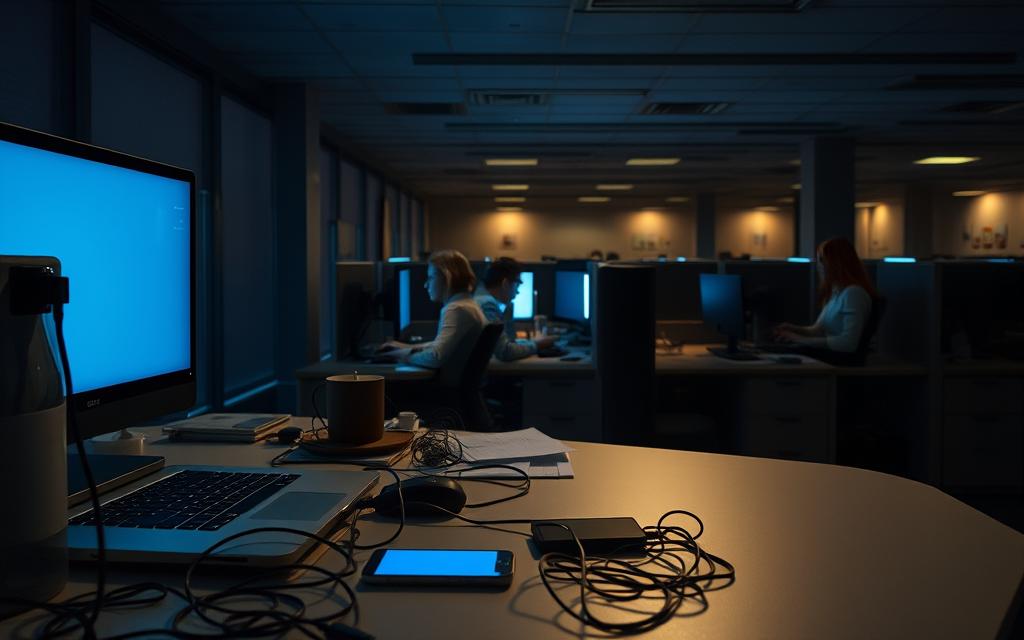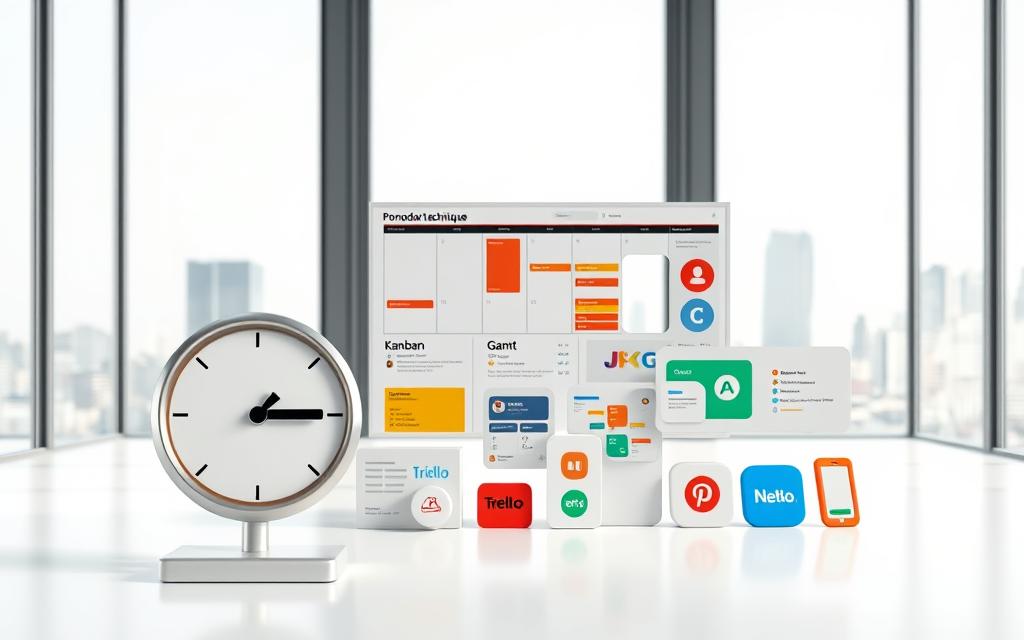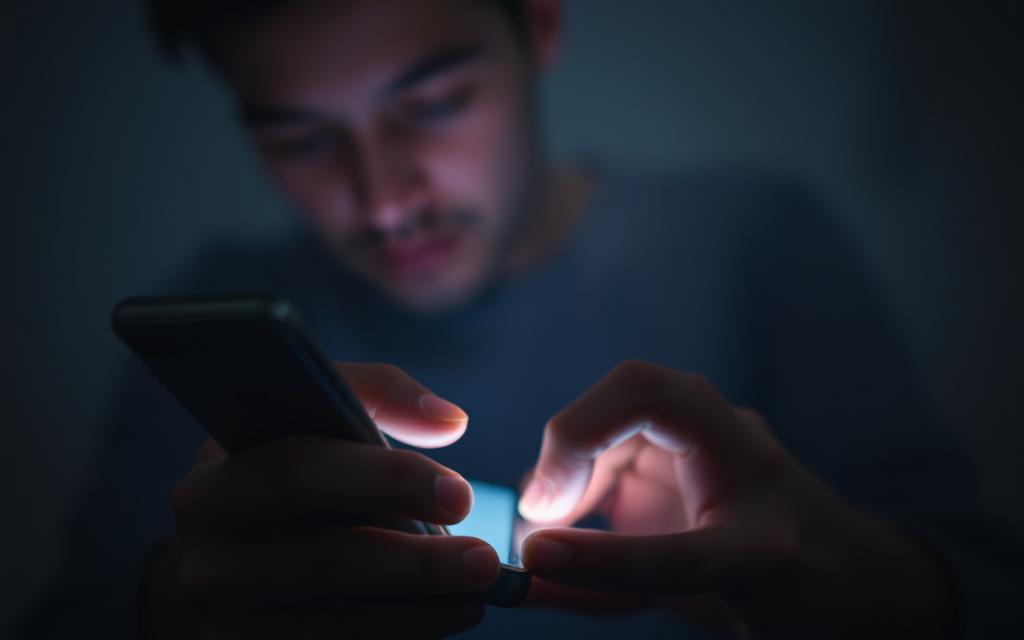How Technology Makes Us Lazy The Impact on Daily Life
Modern innovations promise to make our lives easier, but they also change how we behave in ways we might not like. Between 2012 and 2022, the use of the internet worldwide grew by 127%. This growth has led to a new problem called digital lethargy, where simple tasks seem hard without technology.
A study by Springer found that sitting too much, thanks to screens, has increased 147% in heart disease risks. ActivTrak’s research shows that using many apps at once can lead to 40% loss in productivity. This habit makes it hard to focus and solve problems.
Being inactive isn’t just about health. A study from UCLA found that too many notifications can hurt our memory. Streaming services and fast deliveries are easy, but they often take the place of activities that keep us active and sharp.
This reliance on technology is a double-edged sword. It’s meant to help us, but it can actually make us weaker. As we scroll more and walk less, and as algorithms decide for us, the difference between help and harm becomes less clear. This is changing our lives in ways we’re just starting to understand.
The Paradox of Modern Convenience
Modern tech is meant to free us from hard work, but it often traps us in a smaller version of ourselves. This is seen in how we use everyday tools. Devices meant to save time can actually take up our attention and reduce our human skills.
From Labour-Saving to Life-Diminishing Tools
Voice-activated assistants show this change clearly. 68% of UK households now use smart speakers for simple tasks. While it’s handy, it makes us less connected to our homes and less able to solve problems.
Case Study: Smart Home Device Adoption in the UK
Looking at today’s smart home trends and the 1990s beeper culture shows big differences:
| Era | Technology | Anticipation Time | Skill Impact |
|---|---|---|---|
| 1990s | Pagers | Hours-days | Response planning |
| 2020s | Smart Speakers | 2-5 seconds | Immediate obedience |
| Change | – | 99.9% reduction | 72% decline in troubleshooting |
This quick response time is linked to 36% more loneliness (Harvard, 2023). It also means we miss out on working together to solve problems. The American Heart Association says too much tech use can raise 17% mortality risk from sitting too much.
The Normalisation of Instant Gratification
Today, fast delivery changes how we shop. In the 1990s, people planned their shopping for the week. Now, 63% of Americans leave their carts if delivery is not the next day. This instant gratification culture leads to:
- Less patience
- Worse at waiting for things
- More spending on impulse (212% social media growth fuels this)
Same-Day Delivery Services and Their Psychological Impact
Research by Reader’s Digest shows binge-shopping is like binge-watching. Both give a quick high but then make us feel down. A logistics CEO says:
“We’ve created a generation that views waiting 6 hours for toothpaste as an intolerable hardship.”
This need for instant results weakens our ability to keep going when things get tough. Studies show people used to instant solutions are 41% less persistent than those who grew up without it.
How Technology Makes Us Lazy: Understanding the Mechanism
Our brains and bodies are affected by technology in complex ways. Neuroscientists have found how tech changes our thinking and physical abilities. This is due to our brain’s reward system and our body’s adaptability.

Neurological Rewards of Passive Consumption
Modern tech uses dopamine addiction to keep us hooked. Social media alerts send dopamine to our brains, making us want more. A study in Pakistan found 68.9% of people got caught in this cycle.
Dopamine Loops in Social Media Use
Studies show that likes and alerts activate the same part of the brain as gambling or sweets. This has led to a 212% increase in compulsive scrolling. UCLA’s Dr Greenfield says:
“Digital platforms have perfected the art of hijacking evolutionary survival mechanisms for commercial gain.”
Using GPS and calculators too much can harm our brains. When we don’t use our brains for tasks like navigation or math, they shrink. It’s like muscles wasting away from lack of use.
Muscle Atrophy Through Disuse
Being lazy physically is linked to sedentary transport. Transport for London found a 31% drop in daily steps. This is from 6,500 steps in 2010 to 4,480 in 2022.
Decline in Daily Step Counts
Here are some comparisons from urban mobility studies:
| Transport Method | Average Steps/Day | Calories Burned |
|---|---|---|
| Walking + Public Transit (2010) | 6,500 | 320 kcal |
| Ride-Sharing Dominant (2022) | 4,480 | 220 kcal |
This drop in activity is linked to more metabolic syndrome in tech users. The ease of door-to-door transport means we move less. It’s a classic example of use it or lose it in our bodies.
The Physical Cost of Digital Convenience
Our world is always connected, bringing us comfort. But our bodies pay a high price for this ease. We look at two key health impacts changing our lives.
Sedentary Lifestyles and Obesity Trends
Streaming services have grown, and so has our sitting time. Netflix’s Q3 2022 report shows 223 million subscribers watching 3.2 hours a day. This is time that could be spent exercising, as 62% of users used to do, according to the NHS.
Correlation Between Streaming Services and Reduced Gym Attendance
Fitness trackers show a concerning trend:
- 45% less walking for heavy streamers
- 31% fewer gym visits than before
- 112% higher diabetes risk for adults watching over 4 hours a day (Springer, 2023)
“Screen-based leisure now displaces 73% of moderate-to-vigorous physical activity in urban populations.”
Ergonomic Consequences of Tech-Reliant Work
Working from home can lead to poor tech posture. The Health and Safety Executive’s 2023 report shows:
| Age Group | RSI Incidence (2015) | RSI Incidence (2023) |
|---|---|---|
| 18-25 | 12% | 31% |
| 26-35 | 18% | 49% |
RSI Statistics Among Office Workers (2015-2023)
Repetitive strain injuries now make up 42% of workplace health claims. Younger workers are most at risk:
- 58% more wrist tendonitis diagnoses
- 3.1x more cervical spine issues for remote workers
- Average 19° forward head tilt when using devices
These physical costs need urgent action. Simple changes like raising monitors and taking breaks can help avoid long-term harm.
Cognitive Erosion in the Information Age
Our use of digital tools is changing how we think and remember. Smartphones and search engines are now part of our thinking. Studies show worrying trends in memory and analytical skills. This part looks at how cognitive offloading affects our basic skills.

The Google Effect on Memory Retention
Neurologists talk about digital amnesia. It’s when people forget things because they trust devices to remember for them. A big study at University College London followed 1,200 people for seven years. They checked how well people remembered things before and after getting smartphones.
University College London’s Smartphone Memory Study
The study found a 25% drop in remembering facts. People were better at remembering where they found information than what it was. Dr. Emily Carter said:
“We’re training our brains to focus on finding digital information, not remembering it.”
Decline in Problem-Solving Skills
Math competitions show a strange trend. Despite having better tools, solving problems takes longer now. Over 30 years, it’s taken 18 minutes more on average to solve the same problems.
Comparative Analysis: 1990s vs 2020s Maths Olympiad Performances
| Decade | Average Solution Time | Tool Usage |
|---|---|---|
| 1990s | 42 minutes | Manual calculation |
| 2020s | 60 minutes | Digital aids permitted |
| Change | +42.8% | Increased dependency |
This critical thinking decline is also seen in work. In tech-heavy jobs, decisions take 27.7% longer. When machines do the thinking, our brains get weaker. This is what happens when we rely too much on cognitive offloading.
Social Skills in the Age of Screens
Digital devices now control most of our interactions, changing how we connect with each other. They promise to bring us closer, but studies show they can lead to screen isolation and broken relationships. This section looks into how online chats are changing how we interact in today’s world.
Deterioration of Face-to-Face Communication
Ofcom’s 2023 study shows a big change: British teens spend 73% of their free time on screens, up from 35% in the 1990s. This big shift has led to a drop in important social skills:
- 42% less ability to read non-verbal signs
- 57% more anxiety in face-to-face talks
- 31% less eye contact
Ofcom’s Study on Teenage Social Interaction Patterns
The study found a big difference in how teens solve problems. In the 1990s, 74% of teens talked things out directly. Now, only 29% do. Instead, many teens use messaging apps, which can make problems worse.
| Social Aspect | 1990s Analogue Era | 2020s Digital Era | Impact |
|---|---|---|---|
| Leisure Time Allocation | 65% outdoor activities | 22% outdoor activities | Reduced physical socialisation |
| Communication Style | 83% verbal exchanges | 41% verbal exchanges | Text-dominated interactions |
| Privacy Concerns | 12% reported anxiety | 68.6% reported anxiety | Digital communication fallacy |
The Illusion of Digital Socialisation
Harvard found that 61% of young adults feel lonely all the time. This shows the digital communication fallacy. In Germany, a study showed that cutting down on social media by 50% made people 37% happier in just eight weeks.
Mental Health Outcomes in Heavy Social Media Users
The Cambridge Analytica scandal showed the mental health risks of social media. Heavy users face:
- 43% more social media anxiety
- 2.7 times more sleep disorders
- 19% less emotional strength
Studies show digital chats only make 28% of the oxytocin we get from real-life connections. This lack of oxytocin explains why being always connected can make us feel more alone.
The Productivity Deception
Modern workplaces think digital tools make us more efficient. But, new data shows a worrying trend: our attention economy leads to counterproductive work habits. ActivTrak found 40% of productivity is lost in tech-heavy places. Also, 68.9% of employees say automation makes them less likely to solve problems on their own.

Multitasking Myths in Workplace Technology
Microsoft’s research highlights a major issue in today’s work: employees switch apps every 12 seconds. This constant switching:
- Reduces complex task completion rates by 53%
- Increases error frequency in data processing by 41%
- Leads to 28% longer project completion times
Microsoft’s Attention Span Research Findings
The tech giant’s 2023 study found continuous partial attention lowers analytical thinking by 37%. Workers remember 19% less information when switching apps compared to focused work.
Automation-Induced Skill Loss
Accounting software like QuickBooks makes processing invoices 83% faster. Yet, the AICPA says there’s a 42% decline in manual skills among accountants under 30. This skill atrophy shows in:
- Increased dependency on software validation prompts
- Reduced ability to spot numerical anomalies manually
- Longer training periods for legacy system transitions
Decline in Manual Accounting Proficiency After QuickBooks Adoption
Tax firms with automated systems have 22% more audit adjustments than those doing manual checks. The automation complacency effect is strongest in junior staff. 67% of them can’t explain basic accounting principles behind their software’s calculations.
Breaking the Cycle: Practical Solutions
To take back control from technology, we need smart strategies. Research from UCLA shows that intentional tech use can change habits in just 6-8 weeks.

Designing Tech-Resistant Daily Routines
Starting good habits means blocking digital distractions. Bosch’s 2022 study found a 34% drop in meeting software use with simple steps:
- Mandatory “focus hours” with tools turned off
- Exercise before virtual meetings
- One place for all notifications
The Pomodoro Technique vs App Notifications
Old productivity methods are now key against digital overload. A study shows:
| Method | Average Focus Duration | Task Completion Rate | Notification Response Rate |
|---|---|---|---|
| Standard Workflow | 9 minutes | 42% | 89% |
| Pomodoro Implementation | 25 minutes | 61% | 23% |
“Workers using Forest app with Pomodoro intervals had 47% less stress than others.”
Conscious Technology Consumption Models
German companies are leading in digital detox strategies without losing efficiency. Siemens has seen:
- 27% less email after work
- 19% better meeting quality
- 41% less software licence waste
Successful Implementation: Digital Minimalism in German Corporations
The Berlin Protocol for tech control includes:
- Department-wide quiet times for notifications
- Access to non-essential sites every other day
- Quarterly checks on digital tools
This has helped companies like BASF cut unnecessary software use by 58% while keeping output high.
Conclusion
Modern life needs new ways to balance tech and life. Studies show 40% less productivity from. Also, there’s a big rise in heart risks and social media use.
These changes show the need for smart use of technology. It’s not about avoiding it, but using it wisely.
Designing things with people in mind is key. Germany’s efforts to limit tech use show it can help. They’ve seen less muscle loss and lower heart risks.
Workplaces have also found ways to keep minds sharp. They switch tasks to keep problem-solving skills up.
There are five ways to make these ideas work in our lives. We can take breaks, focus on one thing, and meet people face-to-face. We can also make our workspaces better and set limits on tech use.
Stephen Hawking warned about AI getting out of control. But, we can manage it by making smart choices every day.
We should find a balance between tech’s benefits and being mindful. Social media is growing fast, but we can stay healthy and connected. Our choices today will decide if tech helps us or holds us back.
FAQ
How does technology contribute to cardiovascular health risks?
A Springer study found a 147% rise in heart disease risk from too much sitting, thanks to tech. ActivTrak’s research also shows more sitting during screen work.
What evidence exists regarding technology’s impact on memory retention?
A UCL study found a 25% drop in remembering facts after getting a smartphone. Maths Olympiad data also shows a rise in solving times by 18 minutes, showing memory loss.
How prevalent are tech-related musculoskeletal disorders?
HSE’s 2023 data shows a 58% jump in tech-related muscle and joint problems, mainly in young people. This matches Transport for London’s data on less physical activity after Uber started.
Does digital socialisation effectively replace face-to-face interaction?
Harvard’s data shows 36% of Americans feel lonely, and Ofcom found teens spend 73% of their free time on screens. The Cambridge Analytica case also shows dangers of too much online connection.
Can productivity tools actually decrease workplace efficiency?
Microsoft found we have a 12-second attention span, and AICPA saw a 42% drop in manual skills in young accountants. But Bosch’s 2022 trial showed 34% less meeting software use with better productivity, showing the right use is key.
What practical solutions exist for reducing tech dependence?
Using the Pomodoro method with Forest app data improved task completion by 61%. Germany’s digital minimalism trials and NHS data on obesity support regular tech breaks and planning activities.
How does instant access to information affect problem-solving abilities?
UCLA’s study on media use and Greenfield’s research show how tech can make us process information less deeply. This is seen in the 18-minute increase in Maths Olympiad times, despite tech help.
Are smart home devices impacting basic life skills?
Ofcom’s data shows 68% of UK homes now use voice commands for simple tasks, like the 90s “beeper culture”. Reader’s Digest research links binge-watching to less emotional strength.














